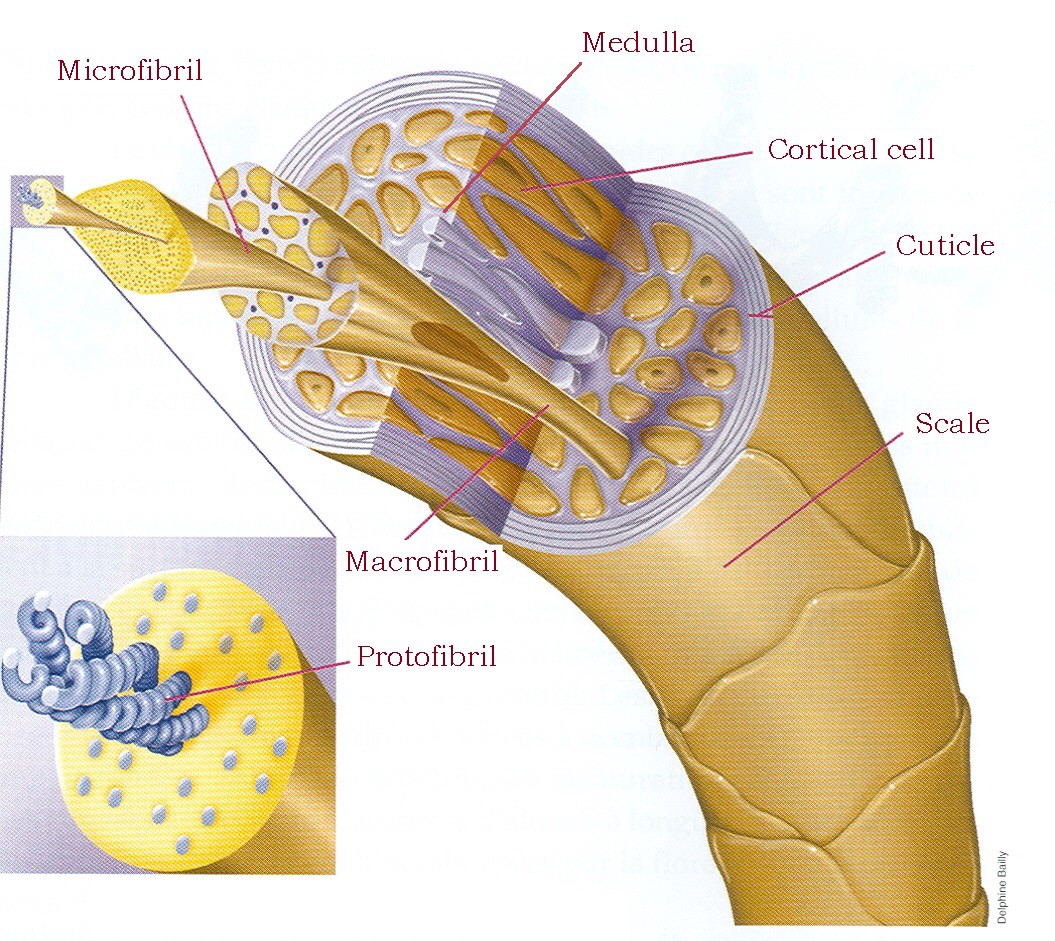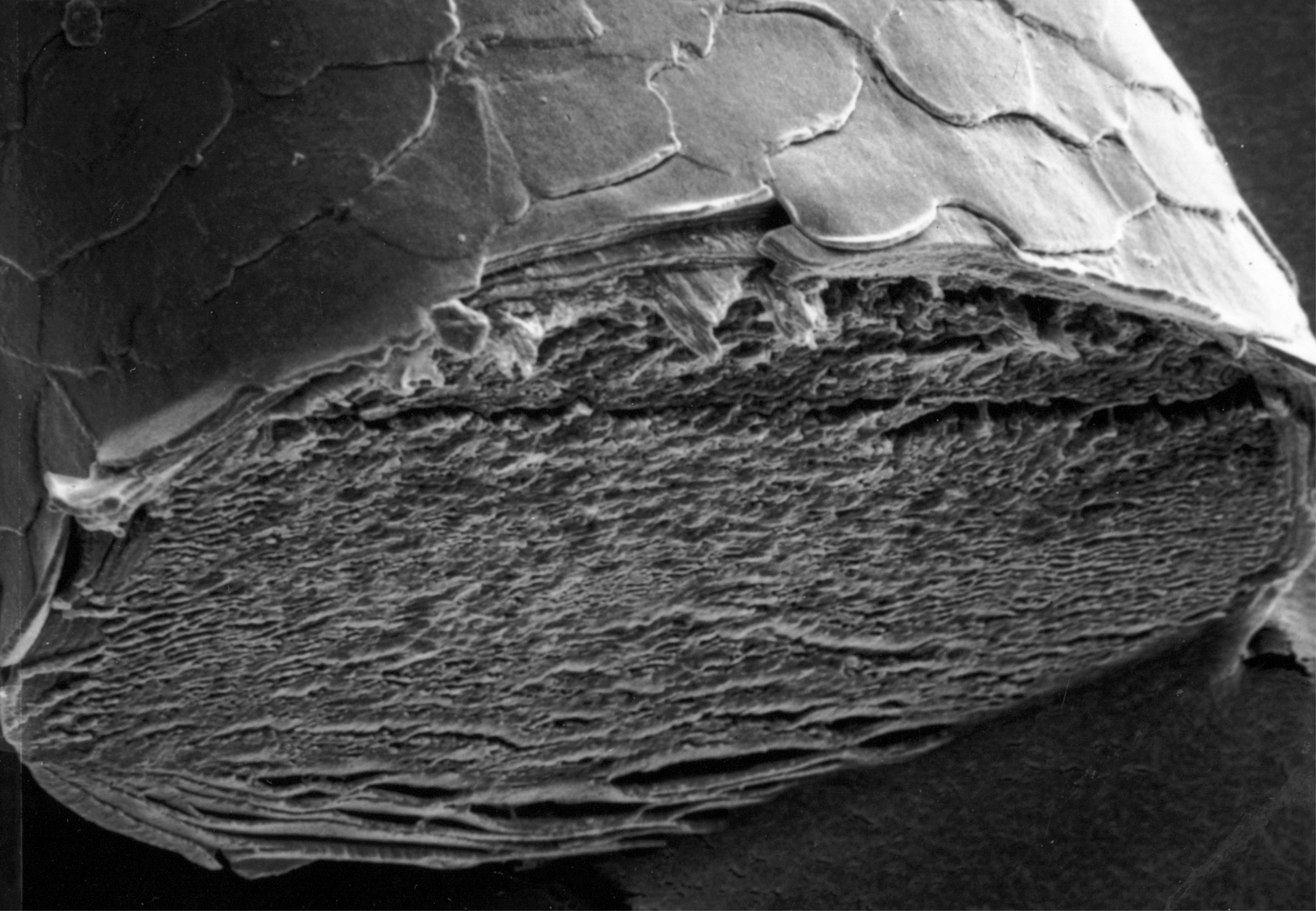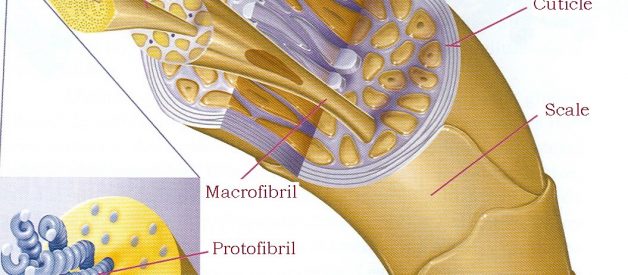Hair is composed of three main layers that give it its structure, colour and shine
A strand of hair is composed of several elements:
 L?Oral Research
L?Oral Research
The three main layers are:
- The medulla (or medullary canal), a central column which is hardly pigmented or not at all. Not present in vellus hair or the lanugo, the medulla very often only appears several months after birth and is formed from one or two rows of anucleated cells. These more or less disjointed cells are replaced by large vacuoles filled with air.
- The cortex (or cortical layer) which makes up the major part of the fibre (90 % of the total weight). This layer is what gives the hair its mechanical and physical properties. Its diameter, of between 45 ?m and 90 ?m, is determined by the number of keratinised cells, which are pigmented and more or less the same colour as the hair. These cortical cells are 2 ?m to 5 ?m wide and over 50 ?m long. They have no cellular organelles and are joined together by an intercellular lipoprotein cement which represents between 5 and 7% of the hair?s total weight. It is in these cortical cells that the melanin pigments which gives hair its colour are found. The cortical cells enclose bundles of longitudinally orientated macrofibrils. Each of these macrofibrils is a cylindrical unit of between 0.1 ?m and 0.4 ?m in diameter. They are are formed from proteic microfibrils. Each microfibril is an arrangement of seven twisted protofibrils formed from four peptide chains rolled into a helix : this alpha helix, whose amino acid sequence is known (18 residues with a majority of cystine, glutamic acid and serine), represents the fundamental protein unit of the organisation of the fibre keratin.
- The component of the fibre nearest the surface is the cuticle, its protective envelope. It is composed of five to ten layers of non-pigmented flattened horny cells (completely keratinised) from 0.2 ?m to more than 0.5 ?m thick and 20 ?m to 70 ?m long. They form a single cell layer arranged like tiles on a roof with multiple overlaps. The free edge of these scales points towards the end of the hair and these scales are joined together by a sort of lipoprotein-type intercellular cement (similar to that of the medulla) called the membrano-cellular complex (MCC). This MCC, composed of ceramides associated with a matrix protein, ensures strong cuticular cohesion. It is a significant barrier against product penetration and water diffusion. The qualities of softness, ease of combing, untangling and the shine of the hair all depend on the healthy state of the cuticle surface. Shine is also affected by the medulla.
 A section of the hair shaft under the scanning electron microscope shows (left), from the interiorto the exterior: the medulla, the cortex (90% of the weight of the hair) and the protective envelope,the cuticle. L?Oral Research
A section of the hair shaft under the scanning electron microscope shows (left), from the interiorto the exterior: the medulla, the cortex (90% of the weight of the hair) and the protective envelope,the cuticle. L?Oral Research


